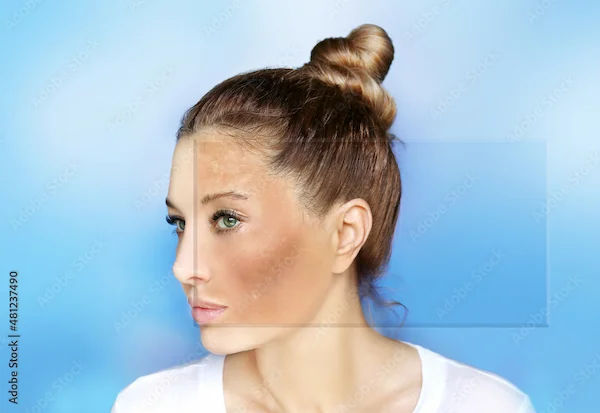Best Home Remedies to Reduce Hyperpigmentation and Dark Spots
Discover safe, science-backed home remedies for hyperpigmentation treatment and dark spot removal. Simple steps, ingredients, and routines that work.

Written by Dr. Md Yusuf Shareef
Reviewed by Dr. Shaik Abdul Kalam MD (Physician)
Last updated on 17th Nov, 2025

Introduction
Dark spots and uneven skin tone are among the most common skin concerns worldwide. Whether they result from acne, sun exposure, or hormonal changes, they can be frustrating. The good news: consistent, safe at-home habits can make a visible difference. This guide covers evidence-based hyperpigmentation treatment and practical dark spot removal strategies you can do at home—without harsh DIY tricks that can backfire.
What Are Hyperpigmentation and Dark Spots?
Hyperpigmentation occurs when parts of your skin become darker than your normal tone because the skin makes extra melanin (pigment). Common types include:
• Post-Inflammatory Hyperpigmentation (PIH): Dark marks after acne, eczema, or skin injury.
• Sun (Age) Spots: From long-term sun exposure.
• Melasma: Patchy brown or grey-brown discolouration, often triggered by hormones and sunlight.
Why this matters: Many cases improve with at-home care if you use the right ingredients and protect your skin from the sun every single day.
When to See a Dermatologist First?
Home care works for many people, but seek professional evaluation if you notice:
• A spot that is new, changing quickly, or looks unusual (to rule out skin cancer).
• Hyperpigmentation covering large areas, severe melasma, or scarring.
• Skin of colour with frequent irritation or worsening spots from products.
• You are pregnant or breastfeeding and unsure which products are safe.
• You take medications known to cause photosensitivity or pigmentation changes.
The Foundation of Any Hyperpigmentation Treatment at Home: Sun Protection
Sunlight (UV) is the top driver of dark spots—and of relapses. Protection is the most powerful “home remedy.”
• Use a broad-spectrum sunscreen SPF 30 or higher every day, even when cloudy.
• Reapply every two hours when outdoors and after sweating or swimming.
• Use enough: about a nickel-sized amount for face and neck.
• Add physical protection: wide-brim hats, sunglasses, shade, and UPF clothing.
• Consider tinted mineral sunscreen if you’re prone to melasma or PIH; it can help block more than just UV.
Evidence-Backed Ingredients for Dark Spot Removal at Home
You don’t need a complicated routine. Choose one or two proven actives, go slow, and be consistent for at least 8–12 weeks.
Vitamin C (Ascorbic Acid)
• What it does: Antioxidant that can help brighten and reduce uneven tone by interfering with melanin production.
• How to use: Apply in the morning on clean, dry skin before moisturiser and sunscreen.
• Tips: Look for stabilised forms (L-ascorbic acid or derivatives) from reputable brands and keep bottles sealed and away from light.
Niacinamide (Vitamin B3)
• What it does: Helps reduce transfer of pigment to skin cells, improves the skin barrier, and calms redness.
• How to use: 2–5% in a serum or moisturiser, morning or night. Well-tolerated and easy to layer with other actives.
Azelaic Acid
• What it does: Gently reduces inflammation and pigment; helpful for PIH and melasma. Also benefits acne and redness.
• How to use: 10% OTC once daily, increase to twice daily as tolerated. Prescription strengths (15–20%) are available for stronger results.
• Good to know: Often safe during pregnancy; ask your clinician to confirm what’s right for you.
Retinoids (Retinol or Adapalene)
• What they do: Increase cell turnover and help fade dark spots over time; also support collagen and acne control.
• How to use: Apply a pea-sized amount two to three nights per week and increase as tolerated. Adapalene 0.1% gel is available OTC in some countries.
• Tips: Use at night only; moisturise to minimise dryness and always wear sunscreen during the day.
Alpha- and Beta-Hydroxy Acids (AHAs/BHAs)
• What they do: Gently exfoliate to smooth texture and brighten tone.
• Glycolic or Lactic Acid: 5–10% a few nights per week.
• Salicylic Acid: 0.5–2% can help with acne-related PIH.
• Tips: Start slowly and avoid over-exfoliation, especially on sensitive or darker skin tones, to prevent irritation and rebound pigmentation.
Licorice Root Extract and Kojic Acid
• What they do: Can help inhibit melanin production and gently brighten.
• How to use: Often found in serums or moisturisers. Introduce gradually to assess tolerance.
Hydroquinone (Use with Care)
• What it does: A strong skin-lightening agent that decreases pigment production.
• Availability: Over-the-counter low strengths in some countries; prescription in others.
• How to use: Typically applied to dark spots for up to three months, then take a break. Always combine with strict sun protection.
• Caution: Misuse can cause irritation or rare side effects. Best used under medical guidance, especially for melasma or darker skin tones.
“Natural Remedies”: What May Help and What to Skip
Here are some natural remedies that may help and what to skip:
May help as supportive care (evidence limited; results vary)
• Aloe vera gel: Contains aloesin, which may gently reduce pigmentation and calm irritation.
• Soy-based products: Some formulations can help brighten with continued use.
• Green tea extract: Antioxidants may support skin health.
Avoid these DIY “hacks” (high irritation risk and can worsen dark spots)
• Lemon juice, undiluted apple cider vinegar, baking soda, toothpaste, hydrogen peroxide, and undiluted essential oils.
• Harsh scrubs or frequent peels at home.
Consult Top Specialists
A Simple 12-Week At-Home Plan for Hyperpigmentation Treatment
Build a consistent routine, minimise irritation, and protect your progress. Here’s a 12 wekk plan to reduce hyperpigmentation:
Week 1–2: Patch Test and Start Gently
• Patch test new products on the inner arm or behind the ear for two to three days.
• AM: Gentle cleanser, vitamin C or niacinamide serum, moisturiser, sunscreen SPF 30+.
• PM: Gentle cleanser, moisturiser. If using azelaic acid 10%, apply a thin layer three to four nights a week.
Week 3–4: Add Retinoid or AHA (One, Not Both at First)
• Choose one: retinol/adapalene at night two to three times a week or an AHA (glycolic/lactic one to three times a week).
• Keep azelaic acid on non-retinoid nights if tolerated.
• Continue daily sunscreen and avoid adding multiple new actives at once.
Week 5–8: Titrate Carefully
• If no irritation, you can increase retinoid to every other night, use azelaic acid nightly or twice daily as tolerated, and AHA up to two to three times a week (avoid same nights as retinoid).
• Stick with one brightening routine for at least eight weeks before judging results.
Week 9–12: Stay Consistent and Reassess
• Expect gradual fading; most people see clearer tone by eight to twelve weeks.
• If you’re not seeing progress, simplify and consider a dermatology visit.
• For melasma or stubborn PIH, medical treatments such as prescription creams, chemical peels, or lasers may be needed.
Lifestyle Habits That Support Dark Spot Removal
Here are some habits that help in the removal of dark spots:
• Do not pick pimples or scabs.
• Treat the cause: Control acne, eczema, or ingrown hairs to prevent new marks.
• Heat and visible light: Hot yoga or saunas and visible light can worsen melasma for some. Cooling measures and tinted sunscreen may help.
• Gentle skincare: Fragrance-free, non-comedogenic, barrier-supporting moisturisers reduce irritation and help actives work better.
• Realistic expectations: Most topical routines need at least 8–12 weeks; melasma often needs ongoing maintenance and strict sun protection.
Special Considerations
• Skin of Colour: More prone to PIH. Prioritise gentle routines, avoid over-exfoliation, and introduce actives slowly to reduce irritation risk.
• Pregnancy/Breastfeeding: Ask your clinician before starting new products. Azelaic acid is often considered, while retinoids and hydroquinone are generally avoided.
• Sensitive Skin: Start with niacinamide and azelaic acid, avoid strong acids initially, and moisturise well.
How Often Should You Use the Focus Ingredients?
• Daily: Sunscreen, niacinamide, vitamin C (if tolerated).
• 1–2 Times/Day: Azelaic acid (build up gradually).
• 2–5 Nights/Week: Retinoid (start low and slow).
• 1–3 Nights/Week: AHA/BHA (avoid the same nights as retinoid).
Common Mistakes That Slow Progress
Here are some mistakes that slow progress:
• Skipping sunscreen or underapplying it.
• Using too many actives at once (irritation → more pigmentation).
• Expecting results in one to two weeks; give your routine 8–12 weeks.
• Not treating acne or eczema that keeps causing new spots.
• Scrubbing or using harsh DIY treatments that inflame the skin.
Consult Top Specialists
Consult Top Specialists

Dr. S Madhuri
Dermatologist
10 Years • MBBS, MD. DVL, DNB, Fellow (Dermatosurgery & Lasers)
Secunderabad
Apollo Hospitals Secunderabad, Secunderabad
(325+ Patients)

Dr. Deepak Jakhar
Dermatologist
8 Years • MBBS, MD (Dermatology)
Delhi
DERMOSPHERE CLINIC,, Delhi

Dr. Asad Ansari
Dermatologist
14 Years • MBBS, DDVL
Kolkata
MCR SUPER SPECIALITY POLY CLINIC & PATHOLOGY, Kolkata

Dr. Priyankar Misra
Dermatologist
11 Years • MBBS, MD Dermatology , Venereology & Leprosy
Kolkata
MCR SUPER SPECIALITY POLY CLINIC & PATHOLOGY, Kolkata
Dr. Kavitha Killaparthy
Dermatologist
23 Years • MBBS,DIPLOMA(DERMATOLOGY,VENEREOLOGY,LEPROSY)
Hyderabad
JDS Skin & Hair Clinic, Hyderabad
Consult Top Specialists

Dr. S Madhuri
Dermatologist
10 Years • MBBS, MD. DVL, DNB, Fellow (Dermatosurgery & Lasers)
Secunderabad
Apollo Hospitals Secunderabad, Secunderabad
(325+ Patients)

Dr. Deepak Jakhar
Dermatologist
8 Years • MBBS, MD (Dermatology)
Delhi
DERMOSPHERE CLINIC,, Delhi

Dr. Asad Ansari
Dermatologist
14 Years • MBBS, DDVL
Kolkata
MCR SUPER SPECIALITY POLY CLINIC & PATHOLOGY, Kolkata

Dr. Priyankar Misra
Dermatologist
11 Years • MBBS, MD Dermatology , Venereology & Leprosy
Kolkata
MCR SUPER SPECIALITY POLY CLINIC & PATHOLOGY, Kolkata
Dr. Kavitha Killaparthy
Dermatologist
23 Years • MBBS,DIPLOMA(DERMATOLOGY,VENEREOLOGY,LEPROSY)
Hyderabad
JDS Skin & Hair Clinic, Hyderabad
More articles from Dark Spots
Frequently Asked Questions
1) Do home remedies really work for hyperpigmentation?
Yes—if “home remedies” means consistent sun protection plus proven over-the-counter ingredients like niacinamide, vitamin C, azelaic acid, and retinoids. Expect gradual results over 8–12 weeks. Harsh DIY hacks (lemon juice, vinegar) can worsen pigmentation.
2) Which is better for dark spot removal: vitamin C or niacinamide?
Both can help. Vitamin C is an antioxidant that brightens; niacinamide reduces pigment transfer and is very well-tolerated. Many people use both (vitamin C in the morning, niacinamide morning or night). If you have sensitive skin, start with niacinamide.
3) Can I use retinoids and acids together?
They can be used in the same overall routine, but not on the same night at first. Start with a retinoid 2–3 nights per week and an AHA/BHA on alternate nights. If your skin tolerates this after a few weeks, you can adjust. Always moisturise and wear sunscreen daily.
4) Is hydroquinone safe to use at home?
Hydroquinone can be effective but requires care. In many places it is prescription-only. Use under medical guidance, typically for limited periods (e.g., up to 3 months) and always with strict sun protection. If you develop irritation, stop and consult a clinician.
5) Do I need sunscreen indoors?
Yes. UVA rays penetrate window glass, and even brief daily exposure adds up. Apply broad-spectrum SPF 30+ every morning and reapply if you’re near windows or outdoors. Tinted mineral sunscreen can offer additional protection that may help with melasma and PIH.
